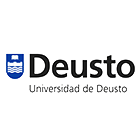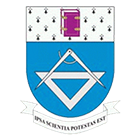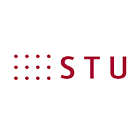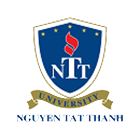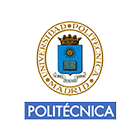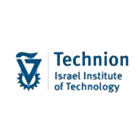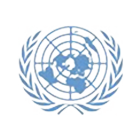Lauri Oksanen
Nokia Solutions and Networks, Finland
Lauri Oksanen is Vice President for Research and Technology in Nokia Solutions and Networks. He started his industrial career 25 years ago when he joined Nokia Cables to set up the first optical fiber plant for the company. Then Lauri joined Nokia Networks where he has worked with all major wireless technologies from GSM to 5G. Lauri has worked in various advanced technology management positions covering fixed and wireless access, core, management, and services, including also the HW and SW platforms. During the Siemens COM and Nokia Networks merger he managed integration of the two technology units. Lauri has Master's and Licentiate degrees in Telecommunications from Helsinki University of Technology (now Aalto), where he also worked as a researcher before joining Nokia.
Title: 2020 Vision for Optimizing Spectrum Usage
Abstract:
Mobile broadband (MBB) is clearly a service which users appreciate. This is shown by the rapidly growing traffic in the networks. NSN Vision 2020 requires to enable mobile networks to cope with up to 1000 times traffic growth during this decade. One of the three enablers is access to spectrum. More spectrum with exclusive license to MBB will be allocated and this is the preferred way. In addition, there are promising methods being developed for more flexible spectrum usage allowing sharing between different technologies.
One key factor for the success of MBB is its universal nature, separating the application from the radio technology. We look at extending this principle to other technologies to enable more efficient use of spectrum with the rapidly changing service needs.
Hiroshi Harada
Kyoto University / National Institute of Information and Communications Technology (NICT), Japan
Prof. Hiroshi Harada is a professor of Department of Communications and Computer Engineering, Graduate School of Informatics, Kyoto, University and executive director in Social Information & Communication Technology (ICT) research center, NICT. He joined the Communications Research Laboratory, Ministry of Posts and Communications, in 1995 (currently NICT). Since 1995, he has researched Software Defined Radio (SDR), Cognitive Radio, Dynamic Spectrum Access Network, Smart Utility Network (SUN) and broadband wireless access systems on the VHF, TV white space, microwave and millimeter-wave band. He served currently on the board of directors (BoD) of Wireless Innovation Forum (formerly SDR Forum), and has served a BoD of White Space Alliance, Wi-SUN alliance, and Dynamic Spectrum Alliance. He also served as the chair of IEEE Dyspan Standards Committee (formerly, IEEE SCC41 and IEEE 1900) since 2009 and the vice chair of IEEE P1900.4, IEEE P802.15.4g, TIA TR-51, and IEEE P802.15.4m since 2008, 2009, 2011, and 2011, respectively. He moreover was the chair of the IEICE Technical Committee on Software Radio (TCSR) in 2005-2007 and has been the chair of Public Broadband Mobile Communication Development Committee, ARIB since in 2010. He received the achievement award and fellow of IEICE in 2006 and 2009, respectively and the achievement award of ARIB and Funai Prize for Science in 2009 and 2010, respectively, on the topic of cognitive radio research and development.
Title: Cognitive Radio and beyond toward AMPHIBIA Network based 5G
Abstract:
In the beginning of 2000, R&D on cognitive radio has started and the results have opened new application field. White space communication or dynamic spectrum sharing system in TV band is one of the representative new applications. Several feasibility studies on the system have been done and several IEEE standards on the system have been issued. Currently the radio spectrum sharing systems have been operated in the frequency band of broadcasting, but they must be operated in licensed mobile communicaiton band in order to achieve high frequency utilization efficiency. Moreover, it is expected that the dynamic spectrum sharing system in licensed mobile communication band is combined with the network virtualization technology to achieve higher frequency utilization efficiency. A cognitive virtualization network, called AMPHIBIA is therefore being proposed. The AMPHIBIA network believes to be one of key platforms for 5th generation wireless communication systems.
In this presentation, latest achievement of research on cognitive radio and white space communications will be summarized by mainly using NICT's R&D results. The definition, image, and current R&D achievement of AMPHIBIA system are explained. Finally the future prospect of AMPHIBIA system toward 5th genration mobile communication systems is presented.
Luiz DaSilva
Virginia Tech, USA
Luiz A. DaSilva holds the Stokes Professorship in Telecommunications in the Department of Electronic and Electrical Engineering at Trinity College Dublin. He is also a Professor in the Bradley Department of Electrical and Computer Engineering at Virginia Tech, USA. His research focuses on distributed and adaptive resource management in wireless networks, and in particular cognitive radio networks, dynamic spectrum access, and the application of game theory to wireless networks. Prof. DaSilva is currently a principal investigator on research projects funded by the National Science Foundation in the United States, the Science Foundation Ireland (SFI), and the European Commission under Framework Programme 7. He is a co-principal investigator of CTVR, the Telecommunications Research Centre in Ireland and holds a Principal Investigator grant from SFI. He has co-authored two books on wireless communications and in 2006 was named a College of Engineering Faculty Fellow at Virginia Tech.
Title: Sharing and Virtualization in Future Wireless Networks
Abstract:
Sharing is a major current trend in wireless networks; it can come in the guise of joint ventures that hold the ownership of mobile network infrastructure, or bilateral agreements between operators, or, in the near future, more dynamic and flexible sharing mechanisms. This goes beyond opportunistic access to spectrum, and will also encopass the sharing of infrastructure, sensors, backhaul, processing, storage, etc. We have recently proposed the concept of Networks without Borders, which allow for the dynamic establishment of virtual networks from a pool of wireless resources from large and small operators, as well as crowdsourced from end users. We envision that these virtual wireless networks will be service-aware, built on a programmable network substrate and orchestrated in response to a specific service need. This presentation will outline our vision for sharing and virtualization in future wireless networks and discuss sharing in three scenarios. In the first scenario, we discuss sharing among traditional operators, focusing on the potential for efficiency gains and how these gains relate to the temporal and spatial correlation in demand. In the second scenario, we look at licensed shared access to spectrum, and in particular the selection of a subset of channels that can be leased to one or more networks for secondary access. We propose a method for identifying and assigning fungible and orthogonal sets of channels to be exploited by different networks operating in a dynamic spectrum access regime. In the third scenario, we discuss sharing in the context of high cell densification.











